Underwater Photography In Ambient Light
Shooting in ambient light without strobes requires adherence to certain guidelines in order to produce good images. In some instances you have little choice than to exclusively or primarily use ambient light. For example - shooting subjects that are further than six feet from you, as is often the case shooting big animals in open water, like whales or sharks, which may not come close enough to light with your strobes. Another example would be wrecks or large portions of a reef that your strobes could simply never light. In this latter instance, you may want to use your strobes to fill-light a portion of the foreground of the reef while the ambient light handles the rest.

In other instances, maybe you just don’t have or want to invest in a strobe and simply want to maximize what you can do without strobes.
Remember that ambient light alone will not produce bright colors or sharp contrast in your images, so read the following carefully and you will make the most of your ambient light shooting.
Stay Shallow
Remember that frequencies of light get absorbed quickly underwater. Your best chance at capturing some color and detail without strobes is shooting in very shallow water where you can maximize the amount of sunlight.
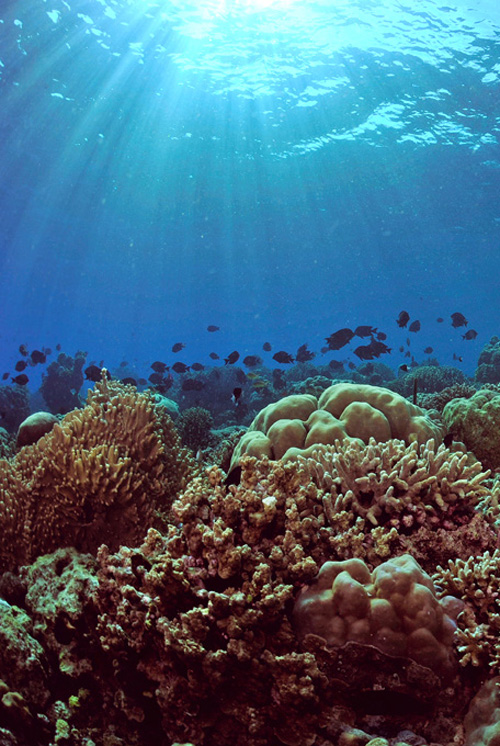
Position of the Sun
Since the sun is your sole light source, be aware of its position and apply a similar approach to shooting on land by keeping the sun behind you, maximizing the amount of light on your subject. Shoot during the hours of the day where the sun is highest in the sky, between 11am and 2pm, where the least amount of light is being reflected away by reflecting off the water’s surface.
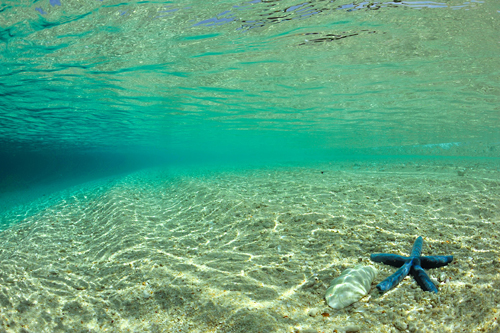
Consider Using Filters
Filters offset the color loss underwater. Using filters will significantly enhance color, and add contrast and detail. In fact with a little practice, you can produce images using filters that have color across large portions of a wreck or reef that otherwise you could never achieve using strobes. The two most popular filters for underwater photographers are Magic Filters and UR/Pro. Filters can be used both on compact and DSLR cameras.
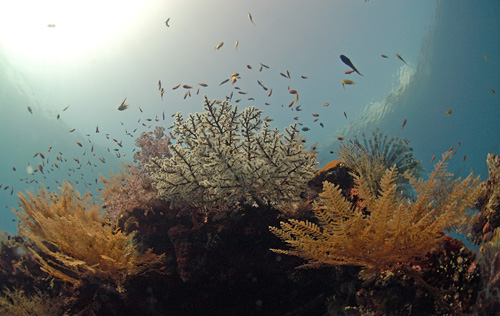
Use Manual White Balance
If you have the ability to manually set your white balance, sometimes referred to as custom white balance, you should do so every time you change depth by about 5 feet or so, or the lighting conditions change. Remember that the lighting conditions change throughout the day. Lighting conditions are also significantly different at different angles from the sun.
To set your white balance, you will need to access the white balance function of your camera and set the white balance by shooting a white slate, although in a pinch you can use white sand or even the palm of your hand. Of course anything other than a true white surface will throw off the accuracy of the setting. Basically what you are doing is helping your camera understand the color of the light and therefore the camera will compensate for some of the color loss from absorption.
Some compact cameras have “underwater modes”, which is a preset custom white balance. This seems to be hit or miss, but if you cannot set the white balance then this is an option you should experiment with to see if the results are better than auto or other white balance presents. Of course, if you have the ability to set your white balance while underwater, you should do so.
RELATED CONTENT
Featured Photographer
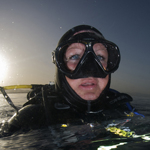
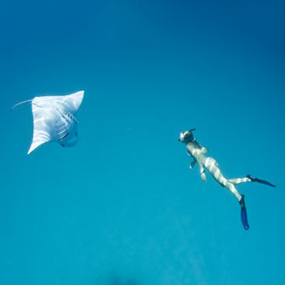
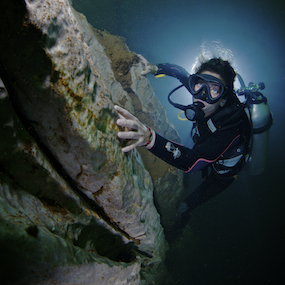


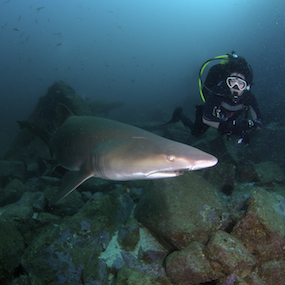
 Antarctica
Antarctica




